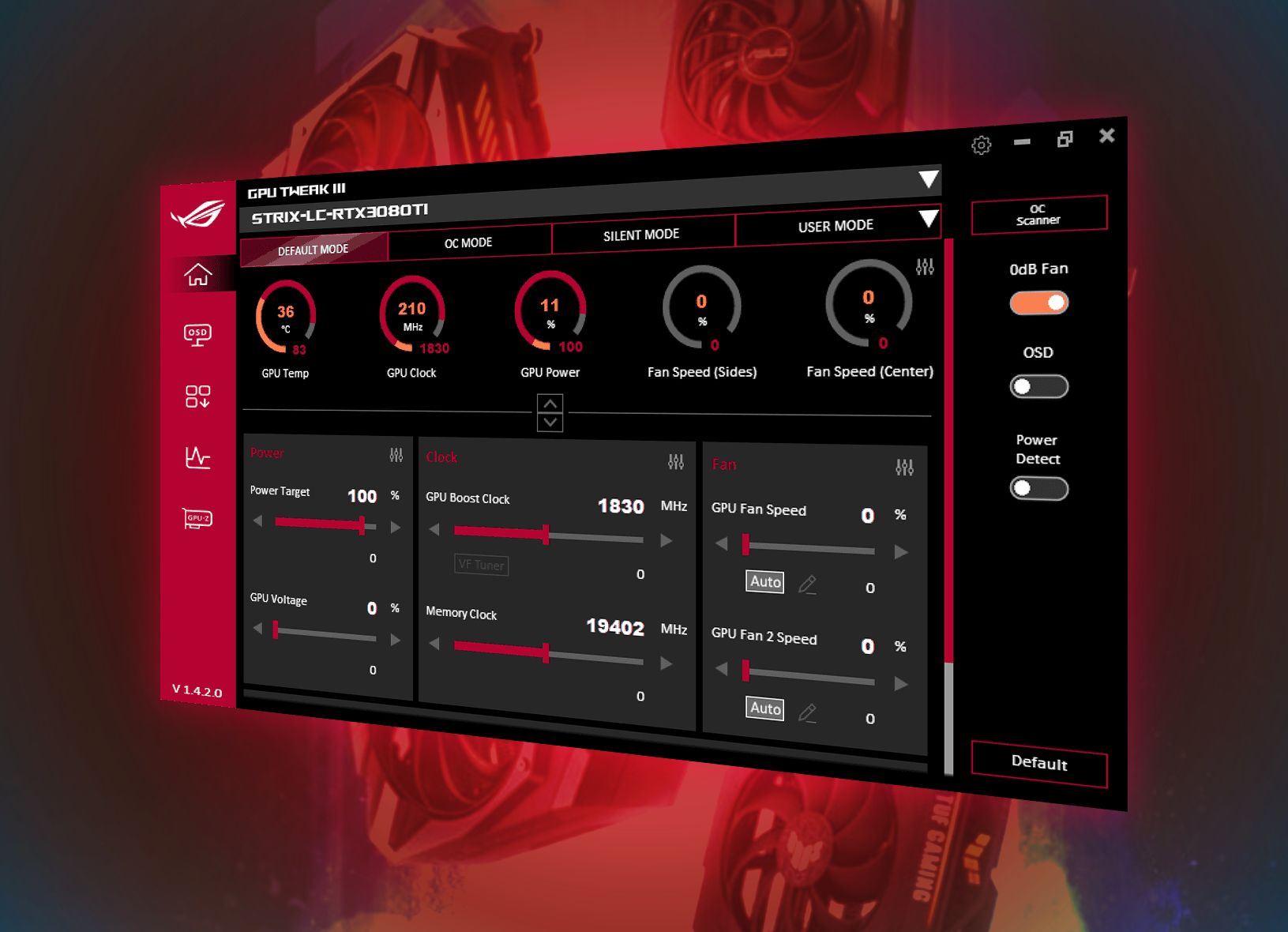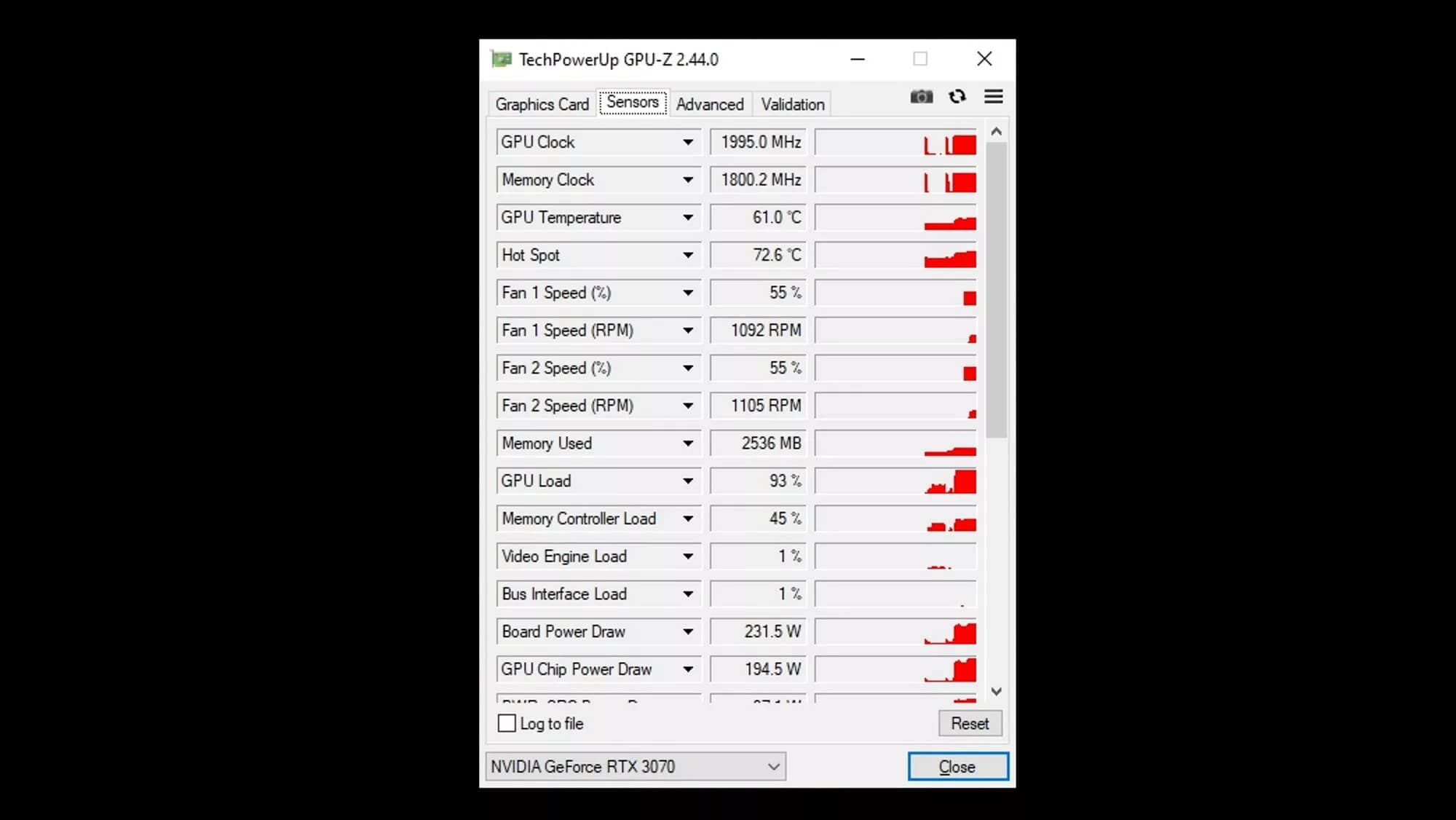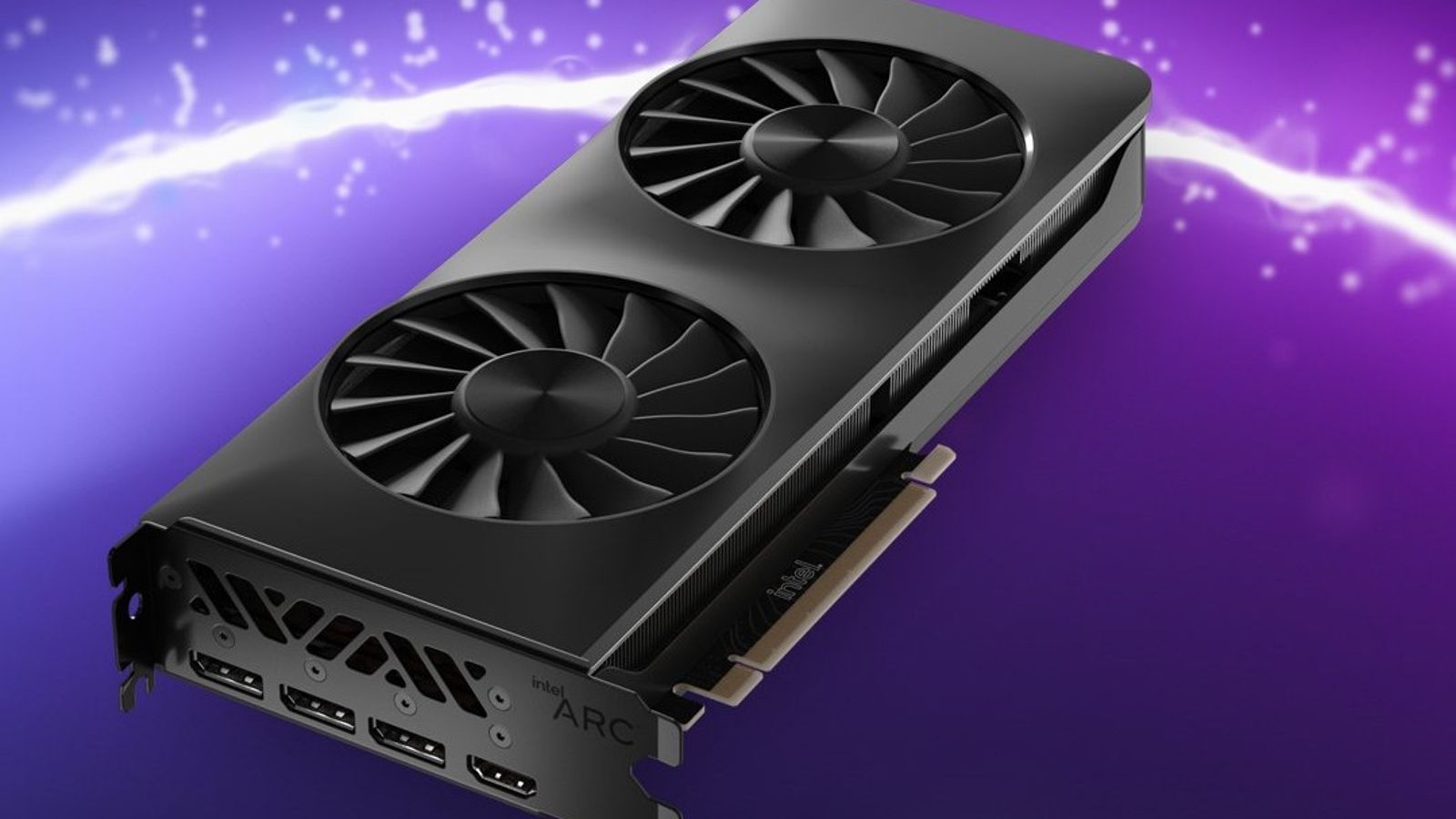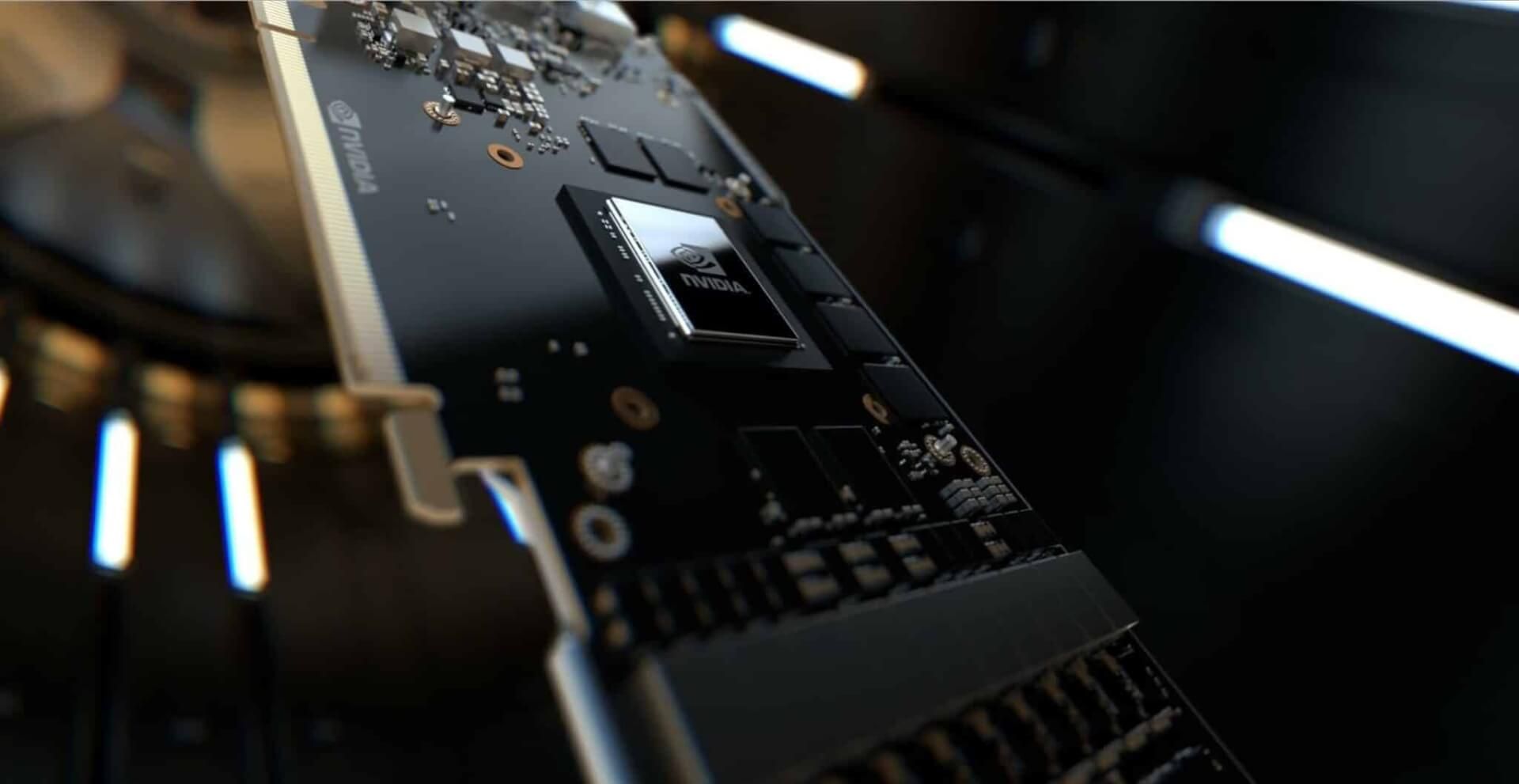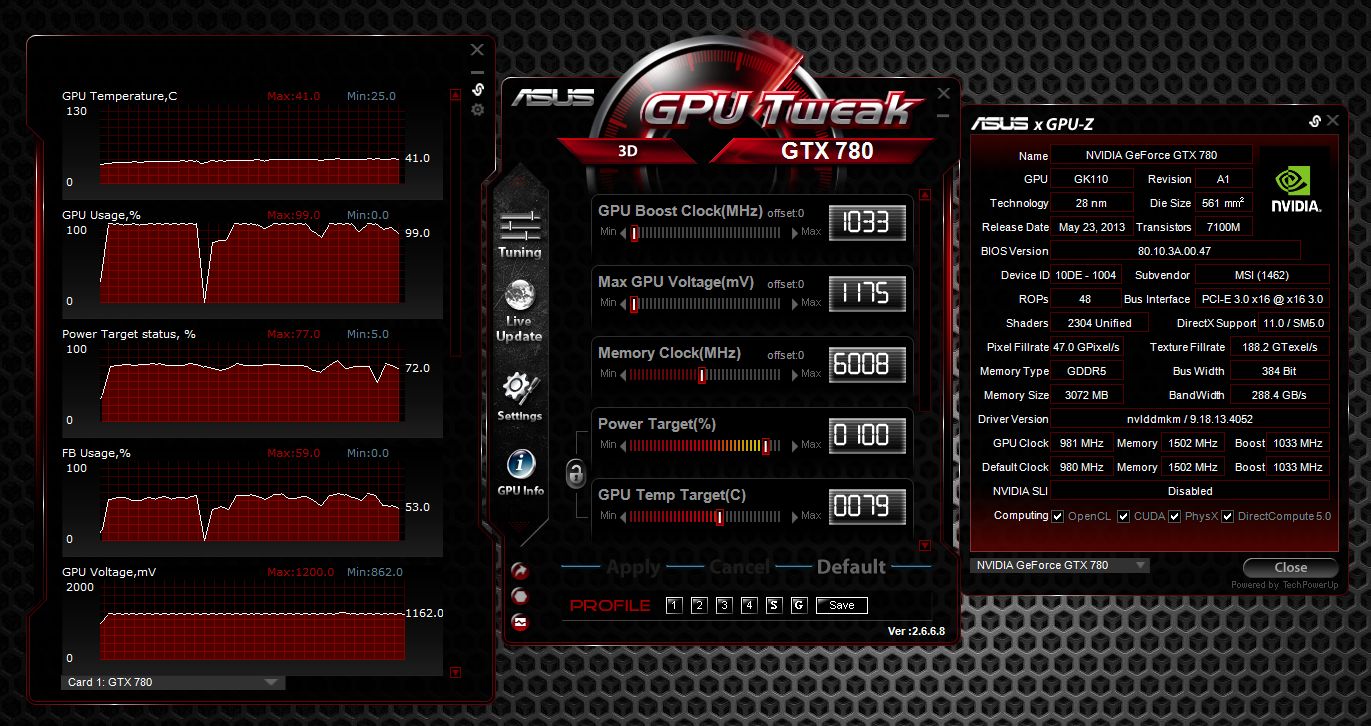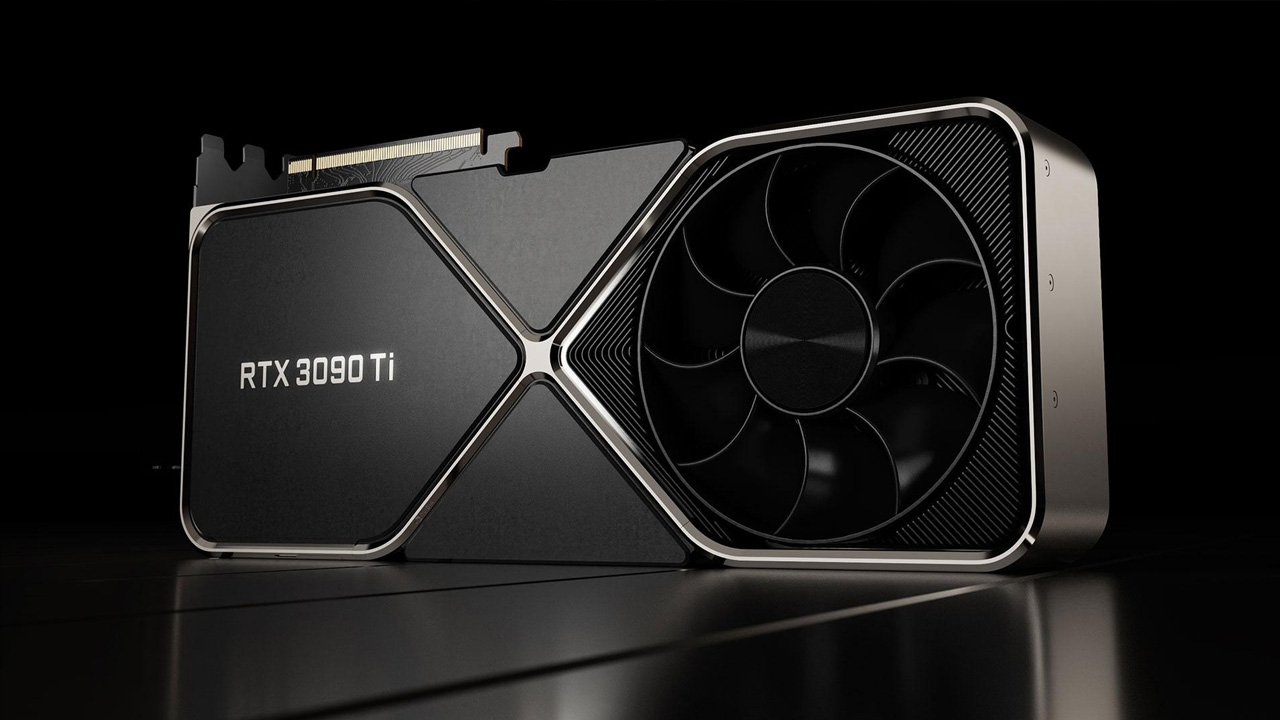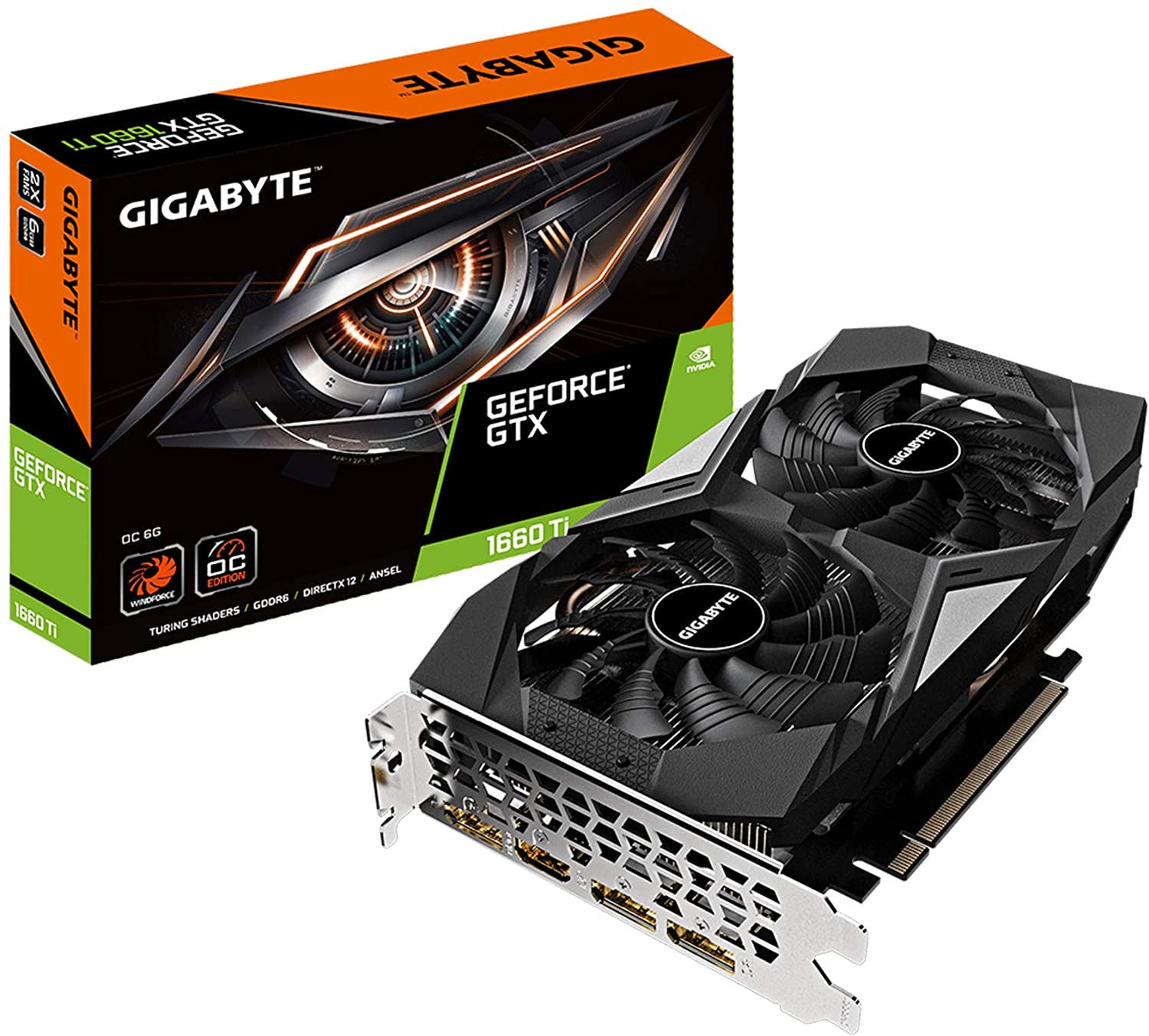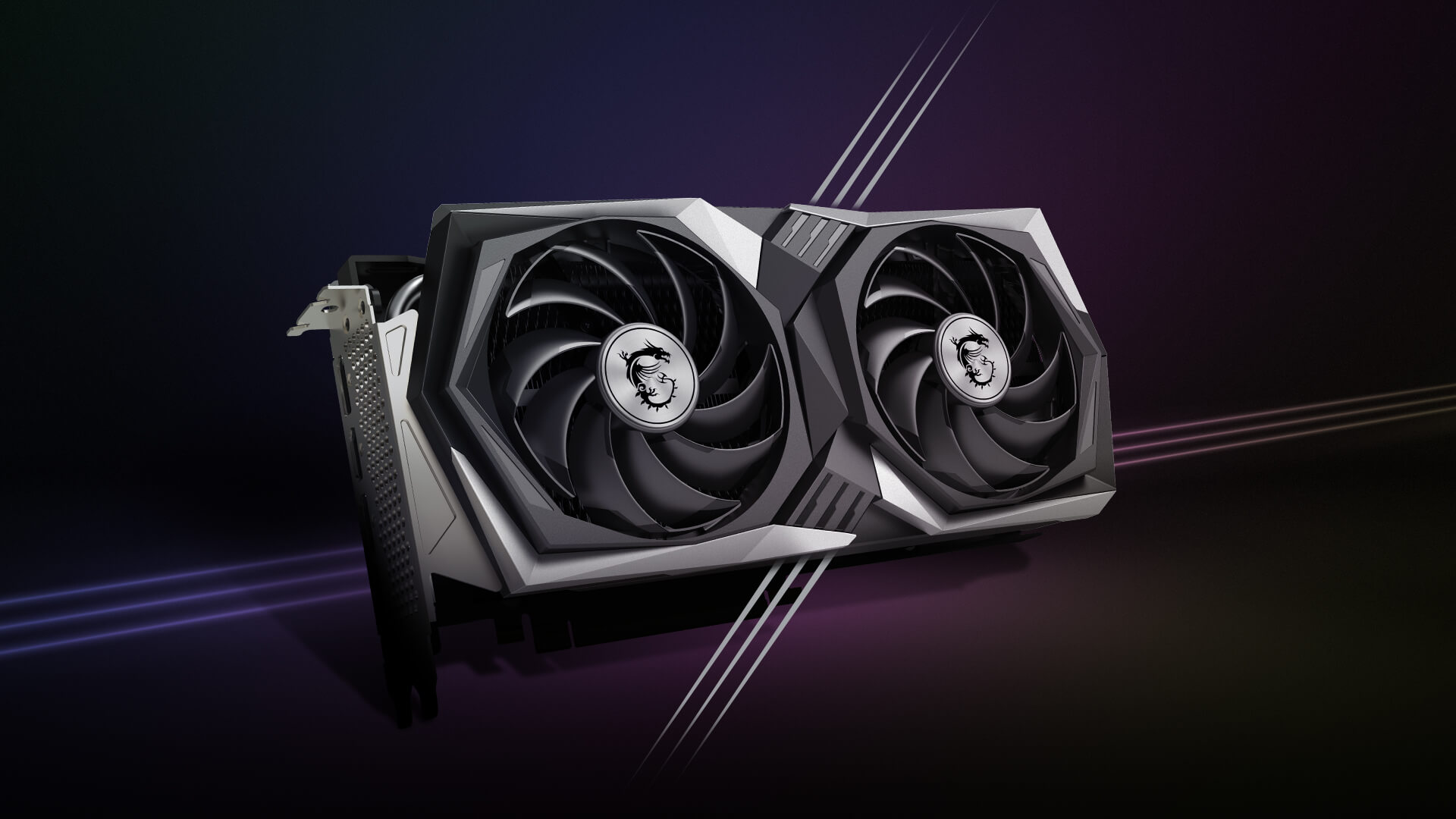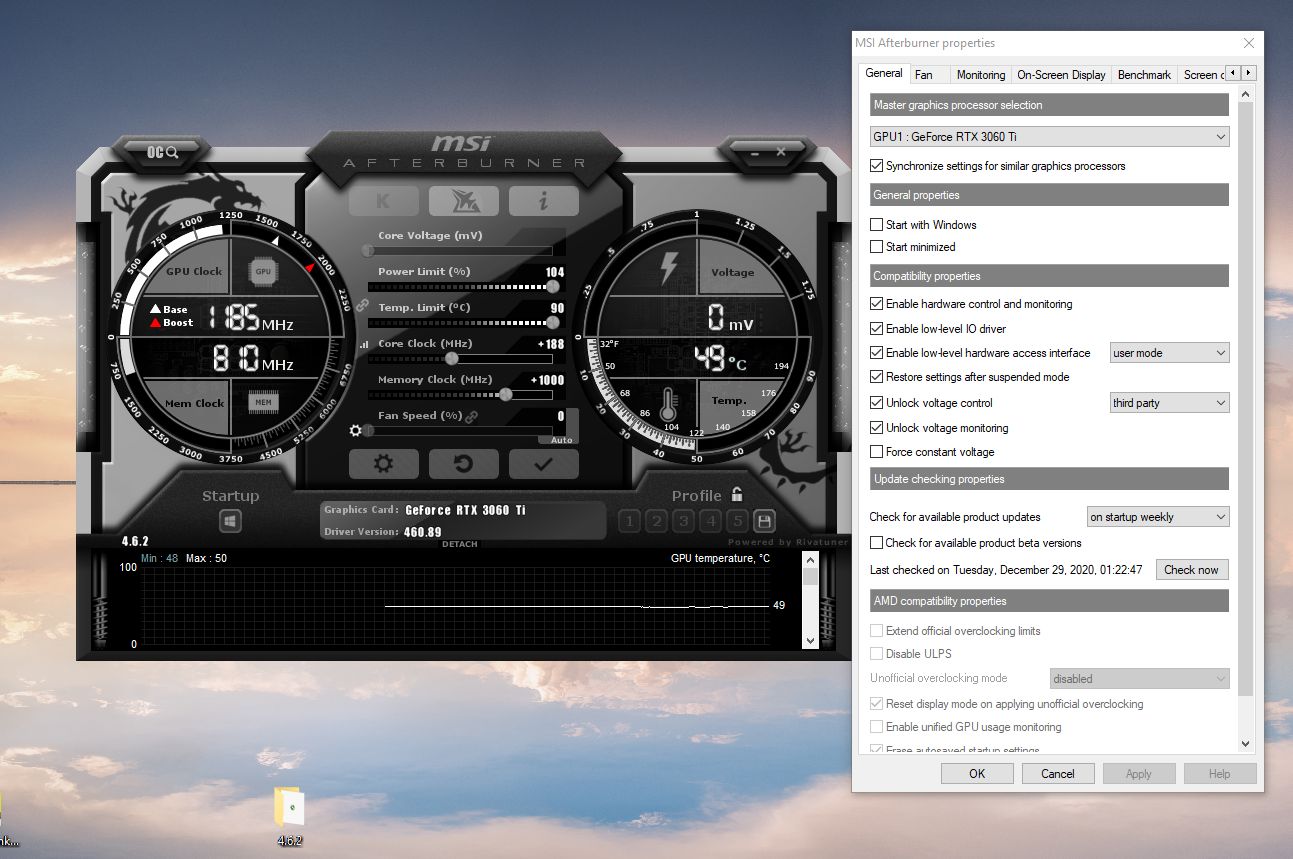Introduction
Welcome to the exciting world of GPUs and overclocking! If you’re a gaming enthusiast or someone who relies on graphics-intensive tasks, then you’ve probably heard of the term “boost clock.” Boost clock is a crucial aspect of modern graphics cards that plays a significant role in ensuring optimal performance. In this article, we’ll dive into the world of boost clock and explore what it is, how it works, and its impact on gaming performance.
When it comes to graphics cards, raw power is everything. The boost clock is an important specification that determines the maximum speed at which a GPU is capable of operating. It represents the clock speed that the GPU automatically ramps up to when demand requires it. Think of it as a turbo boost for your graphics card, allowing it to reach higher clock speeds and deliver better performance in demanding applications.
Understanding how the boost clock functions is essential for selecting the right graphics card for your needs. It can make the difference between smooth gameplay and choppy frame rates. In this article, we’ll examine the inner workings of the boost clock, its relationship with the base clock, and the factors that affect its performance. Whether you’re a gaming enthusiast looking to maximize your FPS or a professional seeking optimal performance for rendering, this article will provide valuable insights.
Moreover, we’ll discuss the concept of overclocking, a popular practice among gamers and PC enthusiasts. Overclocking allows you to push your GPU beyond its stock settings, potentially unlocking even higher boost clock speeds. We’ll explore the relationship between boost clock and overclocking, along with the benefits and risks involved. It’s an exciting journey into the realm of squeezing every ounce of performance out of your graphics card.
So, get ready to unravel the mysteries of boost clock, as we embark on an informative and enlightening exploration of this crucial component of graphics card technology. By the end of this article, you’ll have a solid understanding of how boost clock affects gaming performance and how to make the right choices when selecting a graphics card for your needs.
What is Boost Clock?
Boost clock is a term used in the world of GPUs to refer to the maximum clock speed that a graphics card can reach under optimal conditions. The boost clock represents the peak performance that the GPU can achieve when demanding tasks require it to operate at maximum capacity.
To understand boost clock, it’s essential to first grasp the concept of clock speed. The clock speed of a GPU refers to the frequency at which the GPU’s core and memory operate. It is measured in megahertz (MHz) or gigahertz (GHz) and determines the number of operations a GPU can perform per second. Higher clock speeds generally result in faster and more efficient processing, leading to improved performance in graphics-intensive applications such as gaming and video editing.
The boost clock, also known as the “turbo boost” or “boost frequency,” goes beyond the GPU’s base clock speed. While the base clock represents the standard operating speed of the GPU, the boost clock kicks in when the GPU is under heavy load or needs to deliver maximum performance. It dynamically adjusts the clock speed to a higher value, allowing the GPU to handle demanding tasks with ease.
Boost clock technology is particularly useful in scenarios where sudden spikes in workload occur. Whether it’s rendering complex 3D scenes or running resource-intensive games, the boost clock ensures that the GPU can adapt and elevate its performance to deliver a smoother and more immersive user experience.
It’s important to note that the actual boost clock speed achieved may vary depending on various factors, such as temperature, power limits, and the specific workload being executed. Boost clock speeds are typically specified by GPU manufacturers and can differ between different models and variants.
In summary, boost clock represents the peak performance that a GPU can achieve by dynamically increasing its clock speed beyond the base clock. It enables the GPU to handle demanding tasks and maximize performance in graphics-intensive applications. Understanding the boost clock is crucial for selecting a graphics card that meets your specific performance requirements.
How Does Boost Clock Work?
Boost clock technology is designed to enhance the performance of a GPU by dynamically adjusting its clock speeds based on workload and thermal conditions. It works hand in hand with GPU boost algorithms and thermal management systems to optimize performance while maintaining safe operating temperatures.
When a graphics card is idle or running less demanding tasks, it operates at its base clock speed. However, when the GPU detects the need for increased performance, typically in response to more demanding applications or games, it automatically activates the boost clock. The boost clock speed is higher than the base clock and allows the GPU to deliver additional processing power.
The boost clock works by intelligently monitoring the GPU’s temperature and power consumption. When the GPU is within safe thermal and power limits, the boost clock algorithm increases the clock speed to provide an extra performance boost. This increase in clock speed allows the GPU to process more instructions per second, resulting in improved frame rates, smoother gameplay, and faster rendering times.
Modern graphics cards employ sophisticated boost clock technologies that take into account various factors, such as workload intensity, power delivery, thermal management, and voltage regulation. These technologies ensure that the GPU operates at the highest possible clock speed without exceeding safe operating parameters.
GPU boost algorithms utilize advanced monitoring and control mechanisms to continuously analyze the GPU’s workload and adjust clock speeds accordingly. These algorithms take into account the GPU’s power draw, temperature, and thermal headroom to determine the optimal boost clock speed in real-time.
Furthermore, boost clock functionality is closely tied to the GPU’s thermal management system. To prevent the GPU from overheating, manufacturers implement cooling solutions such as fans, heat sinks, and thermal pads. These cooling components dissipate heat generated by the GPU, allowing it to maintain optimal operating temperatures even during high-demand tasks.
In summary, boost clock technology dynamically adjusts a GPU’s clock speed based on workload intensity and thermal conditions. By intelligently monitoring temperature and power consumption, the boost clock algorithm increases the clock speed when necessary, allowing the GPU to deliver enhanced performance while maintaining safe operating parameters.
Benefits of Boost Clock
The boost clock feature of modern graphics cards brings several benefits to users, enhancing their gaming and overall computing experience:
- Increased Performance: The primary benefit of boost clock is improved performance. By dynamically increasing the GPU’s clock speed when necessary, the boost clock allows the graphics card to handle demanding tasks with greater ease. This results in higher frame rates, smoother gameplay, and reduced lag, delivering a more immersive gaming experience.
- Optimized Power Efficiency: Boost clock technology is designed to find the perfect balance between performance and power consumption. By increasing clock speeds only when needed, the GPU operates more efficiently, minimizing power draw during idle or less demanding tasks. This helps reduce energy consumption and extends the battery life of laptops and portable devices.
- Adaptive Performance: Boost clock adapts to the workload in real-time, ensuring that the GPU delivers the necessary performance for different applications and tasks. Whether you’re playing a graphically demanding game, editing videos, or rendering 3D animations, the boost clock optimizes the GPU’s performance to handle the specific requirements of each workload.
- Improved Responsiveness: With higher clock speeds, the boost clock enables faster data processing and execution of instructions, resulting in improved system responsiveness. This translates into reduced input lag, faster loading times, and snappier overall performance.
- Future-Proofing: Graphics cards with boost clock capabilities are generally more future-proof, as they have the ability to handle upcoming games and software that may require higher performance. Having a higher boost clock ensures that your GPU is capable of handling the demands of future technologies without the need for immediate upgrades.
These benefits make boost clock an essential feature to consider when selecting a graphics card. Whether you’re a hardcore gamer, a content creator, or a professional working on graphics-intensive tasks, the boost clock ensures that your GPU can deliver the performance you need while optimizing power efficiency.
Boost Clock vs. Base Clock
The boost clock and base clock are two important specifications to consider when evaluating the performance of a graphics card. While both of these clocks play a role in determining the overall capabilities of the GPU, they serve different purposes and have distinct characteristics:
The base clock represents the standard operating speed of the GPU. It is the clock speed at which the GPU functions during normal operation and when handling less demanding tasks. The base clock is a reliable indicator of the GPU’s performance under typical conditions.
On the other hand, the boost clock represents the maximum clock speed the GPU can achieve when subjected to high-demand situations. When the GPU detects a need for more processing power, such as when running graphically intense games or rendering complex scenes, the boost clock automatically kicks in, dynamically adjusting the clock speed to a higher value.
The difference between the boost clock and the base clock is that the boost clock allows the GPU to operate at higher clock speeds for temporary periods, providing extra performance when needed. The boost clock is a result of sophisticated boost algorithms and thermal management systems that take into account factors like temperature, power consumption, and workload intensity.
The boost clock is often higher than the base clock, and it serves as a valuable metric for assessing the maximum potential performance of a graphics card. Higher boost clock speeds indicate that the GPU is capable of handling more demanding tasks with greater efficiency, resulting in smoother gameplay, higher frame rates, and faster rendering times.
It’s important to note that the boost clock is not a constant clock speed. It can vary depending on factors such as temperature, power delivery, and workload intensity. The boost clock technology allows the GPU to adapt and dynamically adjust its clock speed, providing optimal performance while maintaining safe operating temperatures.
When comparing graphics cards, it’s essential to consider both the base clock and the boost clock to get a comprehensive understanding of their capabilities. While the base clock provides an indication of the GPU’s performance under normal conditions, the boost clock represents the maximum performance that can be achieved when the GPU is pushed to its limits.
In summary, the base clock represents the standard operating speed of the GPU, while the boost clock indicates the maximum clock speed that the GPU can achieve when subjected to demanding tasks. The boost clock provides additional performance when needed, allowing the GPU to handle graphically intense applications with ease.
Factors Affecting Boost Clock Performance
The boost clock performance of a graphics card is influenced by several factors that can impact its ability to reach and sustain higher clock speeds. Understanding these factors is essential for optimizing the performance of your GPU:
- Temperature: One of the most crucial factors affecting boost clock performance is the temperature of the GPU. As the GPU generates more heat during demanding tasks, it can reach temperature limits that may throttle its clock speed. Efficient cooling solutions such as robust heatsinks, fans, and proper airflow can help maintain lower temperatures and sustain higher boost clock speeds.
- Power Delivery: Another critical factor is the power delivery system of the graphics card. Consistent and stable power supply is necessary to support higher clock speeds. Insufficient power delivery can result in voltage drops, limiting the GPU’s boosting capability. High-quality power supplies that meet the recommended wattage requirements are key to maximizing boost clock performance.
- Workload Intensity: The intensity of the workload being executed on the GPU also influences the boost clock performance. Graphics-intensive applications and games that require more processing power can trigger higher boost clock speeds. Lighter tasks may not require the GPU to utilize its full potential, resulting in lower clock speeds.
- Voltage and Power Limits: Graphics cards have built-in voltage and power limit settings to prevent damage due to excessive power consumption or temperature. These limits can affect the boost clock performance by limiting the maximum clock speed that the GPU can attain. Overclocking or modifying these settings can potentially unlock higher boost clock speeds, but it should be done with caution and adequate cooling.
- GPU Model and Design: Different GPU models and designs may have varying boost clock capabilities. Higher-end models with advanced cooling solutions and better power delivery systems generally offer higher boost clock speeds. It’s important to consider the specific model and manufacturer specifications when comparing boost clock performance.
Understanding these factors and optimizing them can help improve boost clock performance. Ensuring proper cooling, using high-quality power supplies, and utilizing software tools for overclocking and customizing voltage and power limits can potentially unlock the maximum boost clock potential of a graphics card.
It’s important to note that while boost clock performance is a significant consideration, other factors, such as the GPU’s architecture, number of cores, and memory capacity, also play a role in overall graphics performance. A well-balanced system that meets the requirements of both these factors will generally deliver the best performance in demanding applications and games.
Overclocking and Boost Clock
Overclocking and boost clock are closely related concepts that involve pushing a graphics card beyond its factory settings to achieve higher clock speeds and enhanced performance. While boost clock is the maximum speed that a GPU can reach under normal operating conditions, overclocking takes it a step further by manually increasing the clock speeds beyond the boost clock limits.
Overclocking allows users to tap into the full potential of their graphics cards, squeezing out every bit of performance power available. This can result in improved frame rates, smoother gameplay, faster rendering times, and enhanced overall system responsiveness.
Boost clock and overclocking go hand in hand because the boost clock serves as the starting point for overclocking. When overclocking, users increase the GPU’s clock speeds, including the boost clock, to achieve higher performance levels. By pushing the GPU beyond its stock settings, it’s possible to unlock even greater boost clock speeds and overall performance.
However, it’s important to approach overclocking with caution and be aware of potential risks. Overclocking can lead to increased heat generation, higher power consumption, and potentially reduced lifespan of the GPU if not done properly. It requires careful monitoring of temperatures, power delivery, and stability to ensure the GPU remains within safe operating parameters.
To overclock a graphics card, users typically utilize software tools provided by the GPU manufacturer or third-party applications specifically designed for overclocking. These tools allow users to adjust clock speeds, voltage levels, and power limits to find the right balance between performance and stability.
When overclocking, it’s important to be aware that each GPU is unique, and the overclocking potential can vary. Some GPUs may have higher overclocking headroom, while others may have more limited capabilities. It’s a trial-and-error process that requires patience, testing, and, most importantly, proper cooling to manage the increased heat.
Boost clock performance can be directly influenced by successful overclocking. By achieving higher clock speeds through overclocking, the GPU can operate at even higher boost clock levels, giving a significant boost to its performance capabilities.
However, overclocking should be approached with caution, as improper or excessive overclocking can lead to instability, crashes, and potential damage to the GPU. It’s important for users to educate themselves on safe overclocking practices, consider the limitations of their hardware, monitor temperatures and stability during the process, and make adjustments as necessary.
In summary, overclocking is a method of pushing a graphics card beyond its stock settings to achieve higher clock speeds and improved performance. Boost clock plays a significant role in overclocking, as it serves as the starting point for increased clock speeds. Overclocking can provide substantial performance gains but should be approached with caution and proper consideration of hardware limitations and cooling capabilities.
Boost Clock and Gaming Performance
Boost clock is a crucial factor in determining gaming performance, as it directly affects a graphics card’s ability to handle demanding games and deliver smooth, immersive gameplay. Understanding the relationship between boost clock and gaming performance is essential for selecting the right graphics card for optimal gaming experiences.
When it comes to gaming, higher boost clock speeds result in improved frame rates, which translates into smoother gameplay. The boost clock allows the GPU to handle graphically demanding tasks by increasing its clock speed and processing power. This means that a high boost clock is particularly beneficial for running games with complex graphics, high resolutions, and advanced visual effects.
With a higher boost clock, the graphics card can handle more calculations per second, resulting in faster rendering of game scenes, reduced input lag, and better responsiveness. This can make a noticeable difference in fast-paced games where split-second reactions and smooth animations are crucial.
The boost clock also contributes to overall gaming performance by ensuring that the GPU can adapt to variable workloads. Games often have different levels of graphical intensity throughout gameplay, with more demanding sections requiring additional processing power. The boost clock enables the GPU to dynamically adjust its clock speed to meet these demands, ensuring optimal performance without sacrificing graphical quality.
Additionally, higher boost clock speeds can improve the longevity and future-proofing of a graphics card. As games become more graphically demanding over time, having a higher boost clock allows the GPU to handle future games with ease, reducing the need for immediate upgrades.
It’s important to note that boost clock is not the sole determinant of gaming performance. Other factors such as GPU architecture, memory capacity, and driver optimization also play a significant role. However, a higher boost clock generally indicates a more powerful and capable graphics card, which can lead to better gaming performance.
When selecting a graphics card for gaming, it’s crucial to consider the specific requirements of the games you play. By matching the game’s recommended system requirements with a graphics card that features a high boost clock, you can ensure smooth and enjoyable gameplay with optimal performance and visual quality.
In summary, boost clock directly influences gaming performance by providing higher clock speeds and increased processing power. A higher boost clock enables the GPU to handle graphically demanding games, resulting in improved frame rates, smoother gameplay, reduced input lag, and enhanced responsiveness. When selecting a graphics card for gaming, considering the boost clock is key to ensuring an immersive gaming experience with optimal performance.
Boost Clock in Graphics Card Selection
When selecting a graphics card, boost clock is an important consideration that can greatly impact overall performance and the gaming experience. Understanding how boost clock factors into graphics card selection is crucial for making an informed decision based on your specific needs and requirements.
The boost clock plays a significant role in determining a graphics card’s ability to handle demanding tasks, especially in gaming. A higher boost clock allows the GPU to reach faster clock speeds, increasing its processing power and enabling smoother gameplay, higher frame rates, and reduced input lag.
When comparing graphics cards, it’s important to look at the boost clock speeds specified by the manufacturer. Pay attention to the difference between various models and variants, as higher boost clock speeds can indicate more powerful graphics cards that are better suited for running graphically intensive games at higher settings.
However, it’s essential to consider that boost clock alone does not provide a complete picture of the graphics card’s performance. Other factors, such as the GPU architecture, memory capacity, and the number of CUDA cores or stream processors, also play significant roles in overall performance.
Moreover, the boost clock should be considered in conjunction with other relevant specifications, such as the base clock speed, memory bandwidth, and memory type. These specifications collectively determine the card’s overall capability and compatibility with specific software applications and games.
It’s crucial to assess your specific needs and budget when selecting a graphics card based on boost clock. If you primarily engage in graphically intensive activities such as gaming or video editing, opting for a graphics card with a higher boost clock can provide you with the necessary performance headroom to handle these tasks smoothly.
On the other hand, if your usage is more focused on general computing, office applications, or non-demanding tasks, a lower boost clock may be sufficient, allowing you to save on the cost of the graphics card without compromising overall performance.
Additionally, consider the cooling capabilities and power requirements of the graphics card, especially if you plan on overclocking. Higher boost clock speeds can generate more heat and require robust cooling solutions to maintain optimal temperatures. Ensuring that your power supply can handle the increased power demands is also important.
In summary, boost clock is an important consideration when selecting a graphics card, particularly for gaming and other graphically intensive applications. Higher boost clock speeds typically indicate better overall performance, smoother gameplay, and improved responsiveness. However, it’s essential to evaluate the boost clock in conjunction with other specifications, consider specific usage requirements, cooling capabilities, and budget constraints to make the best graphics card selection for your needs.
Conclusion
Boost clock is a crucial aspect of modern graphics cards that significantly impacts their performance, especially in gaming and other graphically intensive tasks. Understanding boost clock and its implications allows for informed decision-making when selecting a graphics card that meets your specific needs and requirements.
Boost clock represents the maximum clock speed that a GPU can reach under optimal conditions. It provides the necessary processing power to handle demanding tasks, resulting in smoother gameplay, improved frame rates, reduced input lag, and enhanced overall system responsiveness.
In graphics card selection, it’s important to compare boost clock speeds between different models and variants, as higher boost clock speeds generally indicate more powerful graphics cards capable of handling graphically intensive applications and games at higher settings. However, boost clock should not be the sole criteria for evaluation, as other factors like GPU architecture, memory capacity, and power delivery also play significant roles in determining performance.
It’s crucial to assess individual needs and budget when considering boost clock. For avid gamers or professionals working with graphics-intensive software, a higher boost clock can provide the necessary performance headroom to ensure the best possible experience. Those engaged in more general computing tasks or non-demanding applications may find lower boost clock speeds sufficient, allowing for cost savings without sacrificing overall performance.
Overclocking is an option to further enhance boost clock performance, but it should be approached with caution. Proper cooling and monitoring of temperatures and stability are essential to avoid potential damage to the GPU.
In summary, boost clock is a vital specification to consider when selecting a graphics card. It directly influences gaming performance and the overall capability of the GPU. By understanding boost clock and evaluating its significance within the context of other specifications, individual needs, and budget, one can make an informed decision when choosing a graphics card that perfectly balances performance and affordability.







